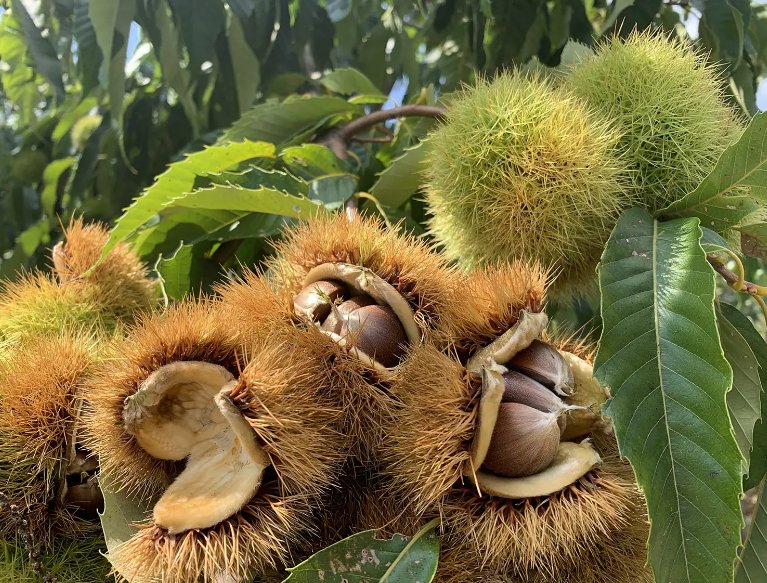“Time is the most valuable commodity, spend it growing”
At Buckdraw Orchard, we pride ourselves with producing the highest of quality trees from the highest quality seed
More THAN JUST AN ORCHARD
The trees that we offer are not just run of the mill trees. These are trees that commercial orchardists use because of the annual harvest quantities, growth traits, taste, viability and drop times.
Quite often you see people selling trees not knowing what variety of chestnut tree they are, how prone to disease are they, production rate or how they will accumulate to your specific geographic area.
There are numerous cultivars (varieties) of chestnut trees that exhibit traits that are beneficial to improving the wildlife habitat. Growing only one genetic line is just not a good practice, if you truly want to improve your habitat, like anything else, planting variety of cultivars vastly improve the pollination rate, wildlife habitat and will show you what works best with your soil type and climate zone.
Everyone is familiar with the eradication of the American Chestnut tree do to blight in the early 1900’s. Since this decimation, Chinese and variety of hybrid chestnut trees have been introduced and have been thriving.
A popular Chestnut Tree called “Dunstan” chestnut trees, is alleged American/Chinese hybrids, have very little American genetics, if any. They are anywhere from 90-99% Chinese. Most Dunstan seedlings grow like other Chinese seedlings. There's a tendency for growers who are new to growing chestnut trees for wildlife to think that all wildlife scenarios are similar. In fact, they can vary widely. Before discussing the trees you should plant, a grower needs to evaluate their growing conditions, soil type and expectations.
Some questions you should be asking is:
1. What is the climate zone?
2. Is chestnut blight found in your area?
3. Will your trees be receiving supplemental water or will they rely on rainfall?
4. Do you want to plant in a cleared area, or will your chestnut trees be competing with vegetation and other trees?
5. If they are competing with other trees, how tall are the other trees?
6. Will your trees be subject to predation by deer or other creatures?If so, are your trees going to be protected from deer while they are young?
7. Are your trees being grown exclusively for wildlife, or do you plant to sell some of the nuts?
How you answer the questions above will impact specific recommendations for chestnut trees.
For the average grower in the eastern US, it is recommended that you protect your trees from predation by deer while they are young, that you are able to provide some supplemental water for trees for at least their first couple of years, and that your trees receive full sun for at least 6-8 hours per day.
You do not want your trees to have to compete with older and larger trees.With respect to specific trees to plant, you generally want to plant chestnut seedling trees and not grafted trees. In most places in the eastern US you want Chinese trees or Chinese hybrids, although there are some Japanese trees and hybrids that would do well in some areas along the Atlantic coast or in the Northeast. Generally speaking, you want to obtain as much diversity in chestnut trees as you can find.
This is because you do not know with certainty what trees will do best in your area. Every grower has a different microclimate, different soil, and different disease and insect pressures. If you will be planting in forested areas, you will want to plant trees that have an erect growing habit and more than average vigor. Initially your goal is to plant trees from different genetic lines simply to see what does well for you.
Whether you are creating a habitat for those opportunities to match wits with that wildlife or if you are truly a lover of high-quality nut trees or looking to sell some nuts, we have what you need. We specialize in high quality chestnut trees and grafted wildlife fruit trees.
Shop Our Trees
Shop our selection of carefully crafted chestnunt trees.






